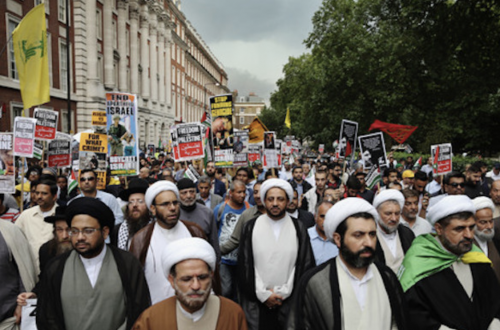This is a guest post by Fariba Amini
In the summer of 2005, shortly after Ahmadi Nejad had first been elected President, I visited Iran. I saw with my own eyes the many changes that had taken place. Upon my return, I told friends and colleagues “these people are not going anywhere.” By “these people,” I meant the new rulers of Iran and their supporting base, the Bassij and the Revolutionary Guards, both paramilitary forces with vested interests in the country’s economy and social structure. What I witnessed was a far cry from the conditions 32 years ago, when a dictatorial ruler, chose to step down instead of spilling blood. The Shah, like Mubarak, relinquished power relatively quickly. People were killed but to be sure in the end, the Iranian military like their Egyptian counterpart, stepped back and refrained from creating a blood bath. As the revolutions go, The Iranian one was relatively bloodless.
Now, three decades later, the idea of a velvet revolution or a non-violent movement maybe attractive in theory but it does not always work in all places. The model worked in Poland or Serbia but in Iran it has thus far failed. Iranians may use non-violent tactics but the regime reacts with more brutality. How far will each side go? Only time will tell.
What the Islamic Republic has done differently and cleverly is to empower a segment of the population, those who used to be the underdogs and who now have everything to lose if and when this regime falls. Whereas half of the population is underemployed, the base of the regime enjoys financial benefits and has investments throughout the industrial sector.
In a move clearly designed to bolster the role of the Revolutionary Guards, Ahmadi Nejad appointed the head of the Guards as the new chief for Iran’s nuclear program. There are many Sardars (commanders) who once served in the Iran-Iraq war. They have enormous power and clout. As one of them told me, “we were the ones who defended Iran, not you the intellectuals.”
The new class now has their hands in every pot and in every pie. Why give it up that easily?
I remember once entering a chic office in northern Tehran with one of my relatives who had some business there. The company owner was a former Iran-Iraq war veteran, now running the largest glass manufacturing company in Iran. They were sending truckloads to Iraq. I began to talk to his son who spoke perfect English and had just come back from Canada where the new Iranian elite have vast investments.
Those in power will resort to more violence if necessary and will stoop to anything. The regime has arrested civil society activists and members of the opposition, including Mousavi and Karroubi, who are currently under house arrest. According to some sources, they have been tortured for a possible round of confessions. Stealing the identity of a student who was recently killed, the IRI has claimed that he was in fact a government informant. “He was our martyr not the opposition’s,” they bragged. In addition, it has been reported that “fear gas” containing yellow rain, Sarin, Tabun or Soman has been used against the demonstrators.
For the time being, even under international sanctions, the IRI can sustain itself via Iran’s main resource, oil. The West and the United States have failed to reach a resolution to the nuclear issue with the Iranian regime. President Obama, now called the “black guy” in some Iranian newspapers, has offered the olive branch on more than one occasion. But at the end, it might be the cry for freedom by the Iranian people that will bring down a semi- military, semi- theocratic regime.
In the spring of 1979, Iranians hoped that the end of a dictatorship would bring about democracy. It did not. At times, I am afraid this regime will take Iran into the abyss in order to save itself. A spring cleaning is much needed in the upcoming Persian New Year.


